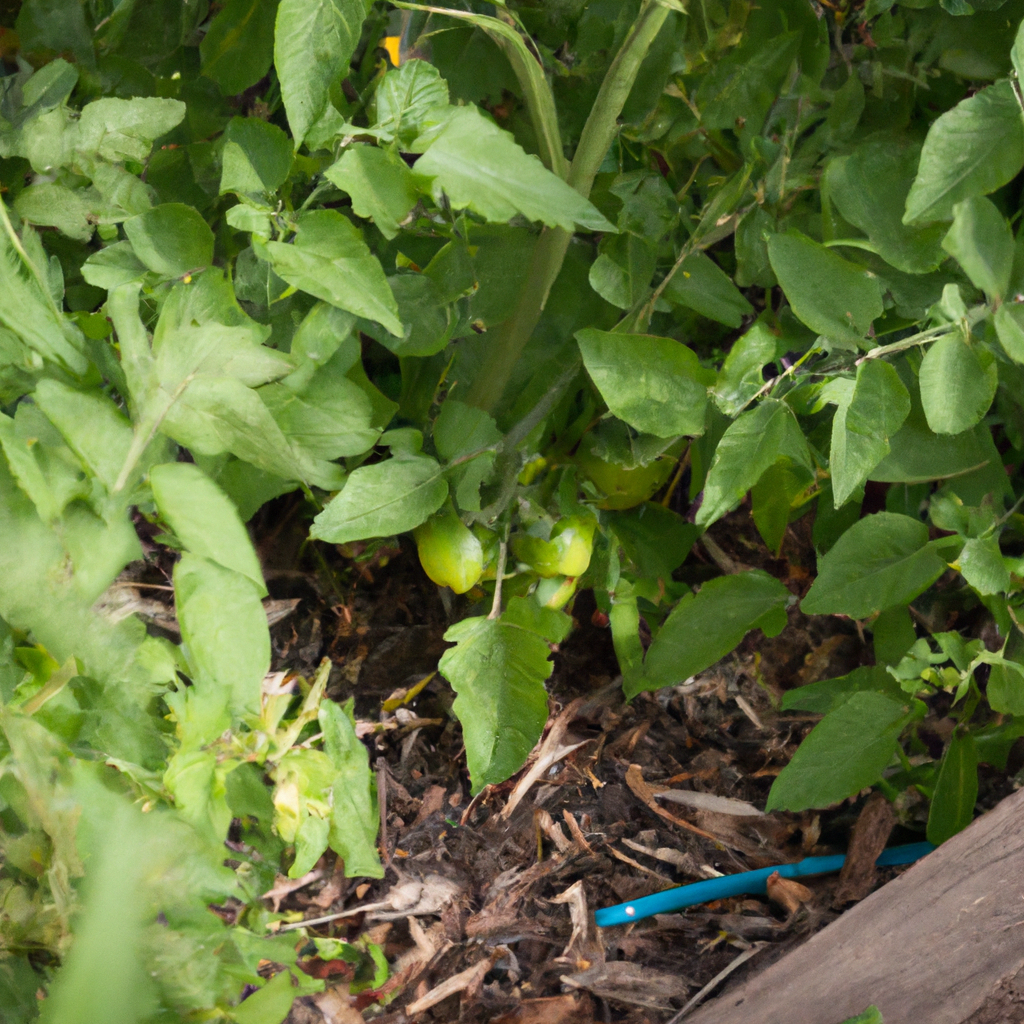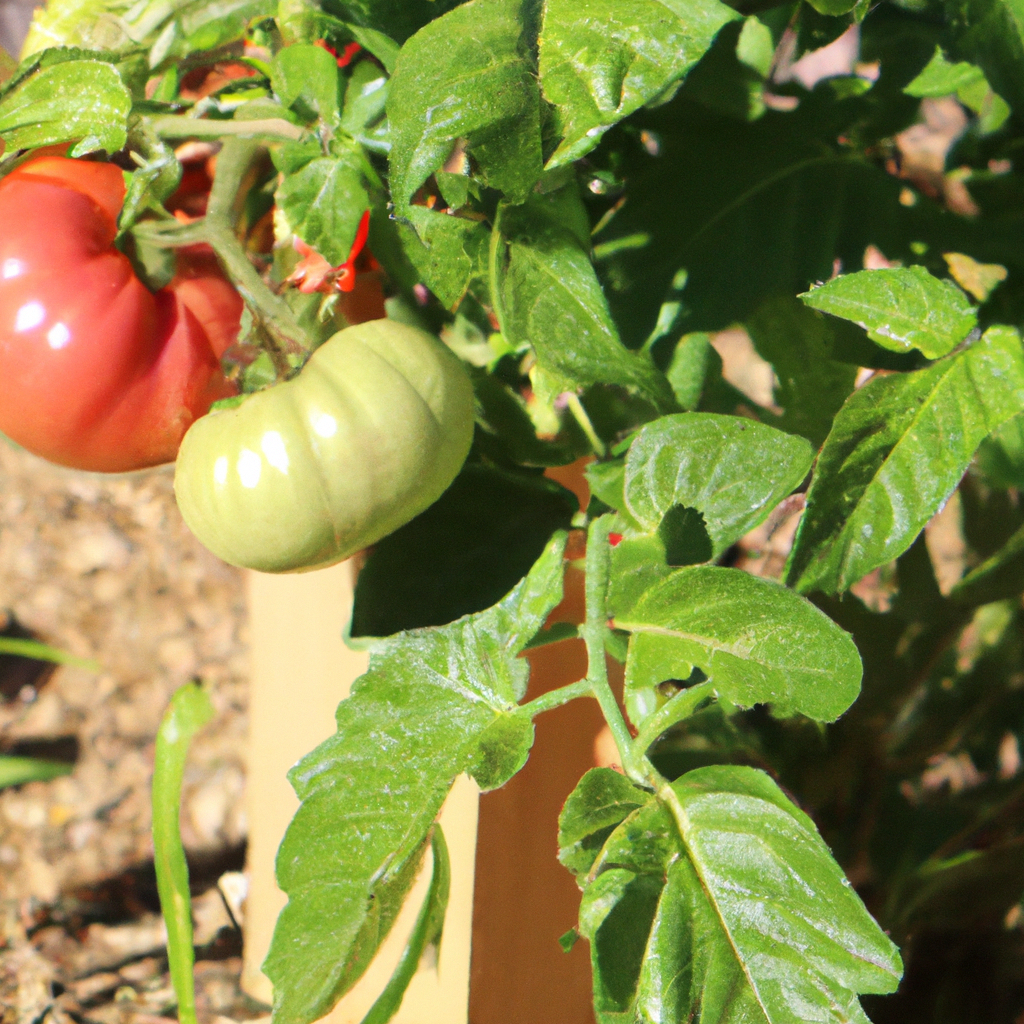Planting tomatoes in a raised bed is a great way to get your garden off to a good start. It’s not hard and I’m here to show you how to do it! Planting tomatoes in a raised bed is a great way to maximize the soil’s potential for growing delicious tomatoes. You’ll need to make sure the bed is at least 12 inches deep and 48 inches wide, and that the soil is loose and well-draining.
The most important thing to remember when planting tomatoes in a raised bed is to give them plenty of space. Planting too close together can lead to overcrowding and poor growth. You should also keep in mind the type of tomato you’re planting, and how much sun it will need. For best results, use a good quality potting mix or compost when planting tomatoes in a raised bed.

Benefits of Growing Tomatoes in Raised Beds
Growing tomatoes in raised beds has some amazing benefits! For starters, it increases my yield significantly! The improved drainage helps keep my plants healthy and the warmer soil temperatures help them grow even better. Not to mention, raised beds make it easier to control weeds and help with air circulation. All of these things put together really help me get the most out of my tomato plants.
Increased Yield
After learning how to plant tomatoes in a raised bed, it’s time to talk about the benefits! Growing tomatoes in raised beds can result in increased yields, since the soil is more nutrient-rich and the soil temperature is more consistent. Plus, weeds are less likely to compete with your tomatoes for space and nutrients. But one of the biggest benefits of raised beds is the increased yield you can get from a single plant. With better soil, drainage, and temperature control, your tomatoes can really take off and produce more than you expected!
Improved Drainage
Switching gears, let’s talk about the benefits of growing tomatoes in raised beds. One of the best advantages is improved drainage. When you plant tomatoes in the ground, their roots can become waterlogged, leading to root rot and stunted growth. However, when you plant them in a raised bed, the soil is elevated, allowing excess water to drain away so the roots don’t become saturated. This means the tomatoes get just the right amount of moisture for optimal growth. Additionally, the soil in a raised bed is lighter and more aerated, so the roots can easily access oxygen, further enhancing growth.
Warmer Soil Temperatures
Now that we understand the basics of how to plant tomatoes in a raised bed, let’s discuss one of the key benefits – warmer soil temperatures. Warmer soil temperatures help tomatoes growing faster, meaning they can be harvested earlier and enjoyed sooner. Plus, when the soil is warm, it’s easier for the tomato plants to absorb nutrients from the soil, making them healthier and tastier! To make sure your soil is nice and warm, add a layer of black plastic to the raised bed. This will help capture and retain heat from the sun, ensuring that your plants get the warmth they need. And to maximize the heat, make sure the plastic is completely sealed and add a layer of mulch on top.
Reduced Weed Pressure
Having a raised bed for your tomatoes can provide many benefits, one of which is reduced weed pressure. It’s a lot easier to pull weeds when they’re in a raised bed, and you don’t have to worry about disturbing your tomato plants in the process. Plus, the soil in the bed will be much easier to work with than if it were in the ground, as it will be much less compact. This means that weeds won’t be able to take root as easily and you won’t have to spend as much time getting rid of them. Even if some weeds do manage to make it into the bed, they’ll be much easier to spot and remove before they become a problem.
Improved Air Circulation
A raised bed is the perfect way to get an abundance of tomatoes. Not only can you expect an increased yield, but you also get improved drainage, warmer soil temperatures, reduced weed pressure, and improved air circulation. Improved air circulation is critical for tomato plants, as it keeps the leaves dry and prevents fungal diseases.
When tomatoes are planted in rows in the ground, the leaves get wet from the soil, which can cause fungal diseases like blight. But in raised beds, the air can circulate more freely around the leaves, keeping them dry and healthy. And the air circulation continues throughout the entire growing season, which helps to keep the plants healthy and productive.

Tips for Growing Tomatoes in Raised Beds
It’s great that you decided to grow tomatoes in raised beds! Preparing the bed is the first step. Make sure it’s level and free of weeds. Then, pick a variety of tomato – there’s lots to choose from! Plant the seeds in the bed and water them regularly. Finally, fertilize every few weeks to ensure your tomatoes have the nutrients to grow big and juicy. Now you’re all set – happy gardening!
Preparing the Bed
Now that we’ve gone over the benefits of growing tomatoes in raised beds, let’s look at some tips on how to get started. Preparing the bed is the first step in any gardening project. Here’s what you’ll need to do:
-
Clear the area of any weeds, rocks, or other debris:
-
Use a garden rake to remove large objects
-
Dig up any weeds and roots
-
-
Level the area:
-
Use a shovel or spade to remove any lumps or bumps
-
Use a flat-edged garden tool to even out the surface
-
When you’re done, you’ll have a smooth, level base to start your gardening project.
Read: Make tomato plants produce more fruit
Choosing a Variety
When it comes to choosing the best variety for your raised bed, there are a few key things to consider. I’m here to give you my best tips on how to choose the perfect tomato for your raised bed.
First, you need to think about your climate. Tomatoes come in different varieties, and each variety is better suited to different climates. Different varieties also have different levels of sweetness and acidity, so make sure to consider what kind of flavor you’re after.
Second, think about the size of your raised bed. Some varieties of tomato are better suited to smaller beds than others.
Planting Seeds
Now that you’ve prepared your raised bed for planting, it’s time to choose the variety of tomatoes you want to grow. But before you get the seeds in the ground, you’ll need to know how to properly plant them. Planting tomato seeds correctly will ensure they thrive and produce the best-tasting tomatoes.
When it comes to planting tomato seeds, the best practice is to plant them about ¼ inch deep, spaced a few inches apart. Make sure to give them adequate space to grow. Once your seeds are in the ground, lightly cover them with soil and water them. Don’t forget to label the planting area so you know which variety of tomatoes you planted!
Watering
Now that you have prepared the raised bed for your tomatoes, it’s time to water them! Watering tomatoes is an important part of growing them, and it can be tricky. If you’ve planted seeds, they’ll need a lot of water to germinate – you’ll want to keep the soil moist until the first shoots appear. After that, you’ll want to water tomato plants deeply and regularly. I recommend watering the soil around the base of the plant, not the leaves, so as not to damage the foliage. If you have mulch, it will help keep the moisture in the soil longer. In general, tomato plants need about one to two inches of water per week, so make sure to check the moisture level often.
Fertilizing
Now that your raised bed is prepared and you have planted your tomatoes, it’s time to start fertilizing! As with any garden, fertilizing your tomatoes is important. Tomatoes need nitrogen, phosphorus, and potassium to grow and develop strong roots, stems, and foliage.
You can either use a granular fertilizer or a liquid fertilizer – whichever you choose is up to you. It’s best to start fertilizing your tomatoes when they’re a few inches tall and then fertilize every two weeks or so. Be sure to read the instructions on the fertilizer package so you know how much to apply and how often to do it. Fertilizing your tomatoes will help them produce bigger, juicier tomatoes that are packed full of flavor.
Growing tomatoes in a raised bed can be the perfect way for farmers to get the most out of their garden. Raised beds are great for tomatoes because they provide better drainage and allow you to better control the soil. With the right care and attention, you can have a bumper crop of delicious tomatoes that will last all summer long! So, if you want to get the most out of your tomato crop, try planting them in a raised bed. It’s the perfect way to ensure that you get a bountiful harvest of juicy tomatoes.

